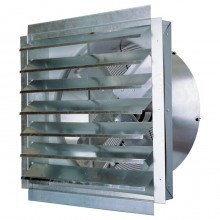Marc Spagnuolo's Blog, page 66
April 29, 2016
Mistakes Happen!
Yesterday was the last day of the Guild Apprenticeship with Guild member David Nichols. David was a good sport and proved to be a great helper all month long. He even helped me refine the design of the Barrister’s Bookcase, collaborating with me on joinery and finishing details. Today being my first “office day” in a month, I’m left pondering the whole experience and the lessons learned. One such lesson is one that we all need to remember: mistakes happen.
 In the first week, a mistake was made that required us to have a complete mulligan. We were building the side frames for the Barrister’s Bookcase and after a quick dry assembly, I noticed a big problem. At nearly every rail and stile joint we had a discrepancy. Somehow, the boards were thinner at one corner. While some mistakes are salvageable, I just couldn’t see a way to avoid a complete do-over. We were on day 3 at this point so it was quite a punch in the gut to David. We discovered that as David did the finish sanding on these pieces, he wasn’t quite used the the balance requirements of my random orbit sander, something you REALLY need to think about when sanding narrow frame pieces. The end result was the thinning of almost every frame piece at opposing corners.
In the first week, a mistake was made that required us to have a complete mulligan. We were building the side frames for the Barrister’s Bookcase and after a quick dry assembly, I noticed a big problem. At nearly every rail and stile joint we had a discrepancy. Somehow, the boards were thinner at one corner. While some mistakes are salvageable, I just couldn’t see a way to avoid a complete do-over. We were on day 3 at this point so it was quite a punch in the gut to David. We discovered that as David did the finish sanding on these pieces, he wasn’t quite used the the balance requirements of my random orbit sander, something you REALLY need to think about when sanding narrow frame pieces. The end result was the thinning of almost every frame piece at opposing corners.
We had several discussions about the incident since then and the bottom line is David just does things differently in his shop. In the case of small frame parts, he usually uses his drum sander at its finest grit leaving only hand sanding prior to finishing. So balancing a sander on narrow pieces was something he’s never really had to do. Because he was a guest in my shop, he didn’t necessarily feel comfortable speaking up at the time and simply did what I asked of him.
While we did lose three days of effort, it only took us a day and a half to catch up and in the process we improved a few things along the way. The end result was a better project. So while mistakes are never fun, especially the ones you can’t recover from, they can certainly be beneficial to the project and to your skill set. Ultimately, the most impactful lessons are the ones you learn from mistakes on REAL projects. While I encourage folks to practice as much as they want, it’s the building of real projects where the rubber meets the road and when the stakes are high things tend to matter more.
Because this whole apprenticeship thing was designed as a learning experience, I made sure David understood that I wasn’t upset at all. This is what happens when you’re learning. And the reality is, we should NEVER stop learning the details of our craft. By extension, we should never arrive at a point that we don’t make mistakes. Well, if you’re truly satisfied with where you’re at in your woodworking education, I’m sure you can arrive at near perfection. But as soon as you venture into unknown territory, you can bet those pesky mistakes will come back to haunt you. So build! Make mistakes! It’s all part of the never-ending learning process!
The post Mistakes Happen! appeared first on The Wood Whisperer.
April 27, 2016
What’s Your Favorite Finish To Spray?
One of the fastest and most effective ways to apply finish is via HVLP (High Volume Low Pressure). Whether you use a self-contained turbine system like I do, or a more traditional compressor-driven conversion gun, HVLP can turn the cumbersome task of finishing into an absolute pleasure. Do it wrong and it can be a disaster but let’s not go there right now.
Just about any finish can be sprayed, including the thicker-bodied materials like paint, if the unit is powerful enough and the material is properly diluted. So what’s your favorite finish to spray? After you answer the poll, use the comments below to tell us why you like that particular finish, or perhaps why you dislike spraying others. For example, I NEVER spray oil-based finishes. They take too long to dry and have a tendency to run. So I stick to fast-drying finishes when it comes to HVLP. How about you?
The post What’s Your Favorite Finish To Spray? appeared first on The Wood Whisperer.
Craig’s Garage Workshop
My first shop was in a single car garage in a duplex my wife and I rented. I told her I wanted to make her something for Christmas. Of course, I would have to purchase some tools in order to do so. Merry Christmas to me! We were only there for 3 years and then we purchased a home that did not have the space for a shop.
Now after twenty years of packing up my truck with portable tools and carting them to the shop at my work or pulling them out onto the porch on nice days, I finally have a space of my own! My mortise, drill press and bandsaw have been in boxes in the attic for a number of years. I recently purchased a DeWalt planer and a Ridgid table saw, forcing me to find a place of my own. A friend from church has several warehouse style buildings on his property and he had a 16×20 room available for me to use. I just have to cover utilities. It has become my weekend getaway. I set it up immediately with a dust collector I got from Harbor Freight for $165. I modified it to vent outside. Gotta keep the lungs clear. I enjoy using reclaimed material and look forward to using the space for quite some time.
The post Craig’s Garage Workshop appeared first on The Wood Whisperer.
April 25, 2016
QALO
April 24, 2016
Lill’s Quilt Rack
This sculpted quilt rack was made for my wife’s Aunt Lill’s 80th birthday. The design inspiration was taken from a grass leaf patter cut into the back of the metal benches at the local library. The quilt rack is made of maple and walnut. All of the shaping and sanding was done with rasps and hand held power tools.
The post Lill’s Quilt Rack appeared first on The Wood Whisperer.
April 20, 2016
Are You Concerned About Wood Dust?
Wood dust. It’s the bane of the woodworkers’ existence. Or is it? Speaking personally, the more I learn the more concerned I get about dust. Ultimately, I plan on doing this woodworking thing for a good long time. Even at low levels, 30-40 years of daily dust exposure could spell very bad things for one’s health. But that’s just my thoughts on the topic. So what about you? Are you as concerned about wood dust as I am (see my recent upgrades) or are you a little more relaxed in your approach?
The post Are You Concerned About Wood Dust? appeared first on The Wood Whisperer.
April 18, 2016
Dennis’ Double Adirondack Chair
My inspiration for this project came from a picture my wife showed me. She asked if I could make it, so I set to it to see what I could come up with. My first attempt had the straight back chair, but after experimenting, we found the Adirondack style chair to be more comfortable. Our basic chair is the double Adirondack style with the table in the middle. We had a client request an upgrade with a hole for an umbrella in the middle, so we added that on some of our later models.
The construction is a basic bench seat construction with full lap joints. For more comfort, I used a 1/2 inch round-over anywhere possible contact would be made. As with my style of outdoor furniture, I used Osage Orange with foot-caps to increase the durability of the legs. In the finishing process, I did a full weather treatment with UV resistance. I make sure to tell my customers they must maintain this coating yearly.
The post Dennis’ Double Adirondack Chair appeared first on The Wood Whisperer.
April 14, 2016
The Desk by Brian
About 2 years ago I started sketching ideas for a desk to go in my home office. My earliest designs called for quartersawn Zebrawood on the drawer fronts to contrast the Walnut’s chaos. I was really worried that the Zebrawood would come off as tacky, so I stalled, and stalled. About 6 months later, I saw a picture of a desk that used a cabinet in place of one of the legs. I really liked how that created a second semi-hidden surface that could provide some pressure relief when the top of the desk became crowded. A few months after that, I was perusing my veneer supplier and found this beautiful curly ash veneer. The last piece of the puzzle had fallen into place. This was the non-tacky Zebrawood substitute that I didn’t know I needed. I bought the flitch and felt ready to begin what would be a three-month long project.
All of the veneering in this project was performed traditionally, using hot hide glue and a veneer hammer. Four drawer bottoms, the back of the cabinet, and the four drawer fronts. The front of the cabinet, the drawer fronts, and the table top sport gentle curves. The legs are tapered ovals, shaped with a rasp and inspired by Tage Frid’s three-legged stool.
The joinery in this project is varied. The drawers were dovetailed by hand, the legs are put together with wedged through tenons and dominoes. The mitered case was assembled with dominoes. The drawer pulls are attached to the drawer fronts with dovetail half-laps. The drawers ride on Blum Tandem slides, and the whole thing knocks down into three pieces and is assembled with threaded inserts and bolts.
Air-dried Walnut, American Ash, Curly Quartersawn Air-Dried Walnut Veneer, European Ash Veneer, Wenge, Plywood, and Blum Hardware. Ash and Wenge parts were pore-filled and finished with Ultra-Blonde Shellac rubbed out to a satin sheen. Walnut parts were finished with Satin Arm-r-seal.
My shop is right around 200 sq ft, so this project leaked all over the house. I turned the garage into a finishing area, used the kitchen table for assembly, and stored the top in the living room on a pair of sawhorses for a month while I completed the rest of the pieces. This was a big project and a huge learning experience for me, and I couldn’t be happier with the result. The build is documented in detail on my website.
The post The Desk by Brian appeared first on The Wood Whisperer.
April 6, 2016
Marc’s Secret Cooler
So this first photo is somewhat dull just a big stack of timber in my workshop. Affectionately called the MAN CAVE. But if I tell you the back story to this project it might start to make sense. My dad, like most of us, enjoys a beer or two in the evening and my mom, like most wives, likes to moan at him for drinking. So he used to stash a few cans in his garage so he could have a quiet beer in his garage whilst “modging” as we call it. Every now and again mom would venture into the garage and accidentally stumble across his secret stash and much moaning would ensue.
They have a log burner in the lounge so they store piles and piles of timber in the garage much like that which you see in the picture. So this inspired me to make that big pile of lumber–but with a hidden secret! Pull the front row of the the stack and a secret compartment is revealed. The back part has a rack for a bottle of wine/whiskey and four holders for glasses. The front part is actually a fridge with enough room for 10 pint cans! The inside is aluminum painted white and attached is a peltier cooler to chill the “cooler box”. The cooler box is also insulated to help keep it cool. The outside is normal pine timber, the cabinet is made from 18mm ply and I clad the ply with beech that I machined from scraps I had laying around.
I made it for my dad as a secret present and a thank you for all the stuff he’s done for me and my sisters over the years. But he was so impressed that he’s actually shown it to mom!
The post Marc’s Secret Cooler appeared first on The Wood Whisperer.
March 31, 2016
Air Quality Upgrades
I’ll be the first to admit that I have a slight problem: I’m a little paranoid about dust. I want as little of the stuff in the shop air as possible so I continually seek out means to achieve that end. While I do wear a respirator while I work, I frequently have to talk on camera shortly after making cuts that put dust directly into the air. Recently I decided to address two concerns with two separate upgrades.
Cyclone Exhaust First, I got rid of my cyclone’s double filter stack and instead opted to vent the fine dust through the wall and outside. The Wynn filter stack I had worked well but it does require frequent maintenance. You have to blow the dust out of the pleats periodically and then empty out the fine stuff that falls into the bottom cleanout. I’m never totally confident that the filter is clean enough and it’s not clear to me at what point the filters need to be replaced. By venting the fine dust directly outside, there’s nothing to clean and I can be 100% sure the fine dust isn’t landing in the shop. A simple 8″ dryer vent is installed in the wall and a piece of flex hose is used to make the connection to the cyclone exhaust port. Special thanks to the folks at ClearVue Cyclones for helping me with the fitting I needed to make the connection!
First, I got rid of my cyclone’s double filter stack and instead opted to vent the fine dust through the wall and outside. The Wynn filter stack I had worked well but it does require frequent maintenance. You have to blow the dust out of the pleats periodically and then empty out the fine stuff that falls into the bottom cleanout. I’m never totally confident that the filter is clean enough and it’s not clear to me at what point the filters need to be replaced. By venting the fine dust directly outside, there’s nothing to clean and I can be 100% sure the fine dust isn’t landing in the shop. A simple 8″ dryer vent is installed in the wall and a piece of flex hose is used to make the connection to the cyclone exhaust port. Special thanks to the folks at ClearVue Cyclones for helping me with the fitting I needed to make the connection!
 Next up is an exhaust fan. As good as my dust collection system is, it doesn’t catch everything. And it’s not necessarily the dust collector’s fault. Many woodworking tools are designed with dust collection as an afterthought. So if I’m in a situation where I need to talk on camera and the shop air is laden with dust, a high capacity exhaust fan would allow me to clear the air quickly and get back to work. So I installed a 30″ 5500CFM Maxxair Exhaust Fan. Within minutes, the entire volume of shop air is forced out and replaced with fresh air. I installed the fan in the back of the shop which allows me to open the front door to create something of a wind tunnel. Works like a charm!
Next up is an exhaust fan. As good as my dust collection system is, it doesn’t catch everything. And it’s not necessarily the dust collector’s fault. Many woodworking tools are designed with dust collection as an afterthought. So if I’m in a situation where I need to talk on camera and the shop air is laden with dust, a high capacity exhaust fan would allow me to clear the air quickly and get back to work. So I installed a 30″ 5500CFM Maxxair Exhaust Fan. Within minutes, the entire volume of shop air is forced out and replaced with fresh air. I installed the fan in the back of the shop which allows me to open the front door to create something of a wind tunnel. Works like a charm!
The Test
 To test out the fan system, I kicked up a bunch of dust into the air and used a Dylos DC1100 Air Quality Meter to monitor the air quality. After turning on the fan, it took about 10 minutes for the shop to return to normal. Given how much dust I kicked up (enough to be visible to the naked eye) I was pretty impressed.
To test out the fan system, I kicked up a bunch of dust into the air and used a Dylos DC1100 Air Quality Meter to monitor the air quality. After turning on the fan, it took about 10 minutes for the shop to return to normal. Given how much dust I kicked up (enough to be visible to the naked eye) I was pretty impressed.
Things To Be Concerned About
1 – Air loss. If you condition your shop space in the Winter and Summer, punching holes in the wall will certainly create a source of air loss, and not just while in use. There isn’t much I can do about the cyclone exhaust but the exhaust fan can be easily covered. My plan is to simply build a hinged insulated box that will cover the fan when not in use. And I’ll need to be very strategic about when I use the fan during the Summer months.
2 – Safety. Many shops are located in basements and garages that share space with furnaces and water heaters. Venting outside and running exhaust fans creates a pressurized situation that could very well draw dangerous gasses into your shop space. My standalone shop doesn’t have any of those things within it so all I need to do is open my front door to create the needed return air. DO NOT install either of these upgrades without doing your research first!
3 – Neighbors. Both of these upgrades are noisy and depending on how close your neighbors are and how noise-tolerant they are, there could be a major issue. I’m fortunate in that there’s quite a bit of space between the houses in my neighborhood as well as the fact that being located near an air force base makes the neighborhood very noise-tolerant. Furthermore, I rarely run loud tooling after 8pm.
So if you want cleaner shop air and you have the means/desire, consider venting your dust collection outside and installing an exhaust fan!
The post Air Quality Upgrades appeared first on The Wood Whisperer.




